Google is phasing out the current generation of Google Glass, amidst claims that they’re working on a new iteration from scratch. That doesn’t mean you have to give up on your idea of owning high-tech augmented reality glasses, however. Believe it or not, there are plenty of alternatives out there — or on the way — that will more than get the job done.
If you’ve ever wanted to own Google Glass for yourself but found the asking price much too steep, or just didn’t want to join their ridiculous Explorers program, then you’re in luck. We’ve compiled a list of some of the top augmented reality glasses on the market; what you may know as smartglasses.
The Best Smartglasses: Top 10 Alternatives to Google Glass
Your hopes and dreams of owning Google Glass may be shattered, but that doesn’t mean you can’t find another pair of smartglasses as a suitable alternative. As the wearable market explodes in popularity and innovation, we’ve begun to see a lot more manufacturers dipping into the “smartglasses” pool. Brands like Microsoft, Sony, Epson and more are all giving the budding tech niche a try.
If you’ve been looking for a pair of smartglasses to wear out and about, you’ve come to the right place.
Vuzix M100
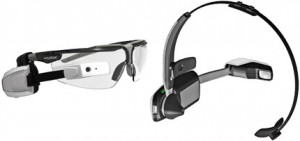 The Vuzix M100 glasses are designed to offer a “hands free” portable computer of sorts, all wrapped up into a headset. Vuzix claims the headset is an “Android-based wearable computer, enhanced with a wearable monocular display and computer, recording features and wireless connectivity capabilities designed for commercial, professional, and prosumer users.”
The Vuzix M100 glasses are designed to offer a “hands free” portable computer of sorts, all wrapped up into a headset. Vuzix claims the headset is an “Android-based wearable computer, enhanced with a wearable monocular display and computer, recording features and wireless connectivity capabilities designed for commercial, professional, and prosumer users.”
It includes a bevy of pre-installed media apps that allow users to record video, images and more. Advanced features include a digital assistant, calendar management, timers and event trackers and even support to pair up with a smartphone.
There are two variants of the M100 available, one that looks more like a traditional pair of goggles or sunglasses, and the other that’s mounted over-the-head.
As you can see, these are specifically designed for professional and commercial use so they might not be quite your speed if you just want to wear them around town. That said, they could certainly work for that, as well.
You can pick up the Vuzix M100 for $1,000 on Amazon.
Optinvent Ora-1
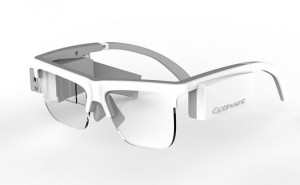 The Ora-1 has been designed to offer several different methods of use. To elaborate, it includes two different modes, both of which have been tailored to offer completely different experiences. A unique AR mode projects an interactive display in a 24-degree field of view around you, the equivalent of an 84-inch screen hovering in front of you. Another mode, called Glance allows you to see peripheral content similar to Google Glass. That is, the display is presented off to the side, allowing you to better interact with the world around you.
The Ora-1 has been designed to offer several different methods of use. To elaborate, it includes two different modes, both of which have been tailored to offer completely different experiences. A unique AR mode projects an interactive display in a 24-degree field of view around you, the equivalent of an 84-inch screen hovering in front of you. Another mode, called Glance allows you to see peripheral content similar to Google Glass. That is, the display is presented off to the side, allowing you to better interact with the world around you.
The biggest downside is that the Ora-1 headset looks exactly like a geeky pair of smartglasses. Who cares though, right? It’s powered by a 1.2GHz ARM Cortex processor that should give it plenty of firepower, and runs Android 4.2.2. In addition, it includes a 5MP camera, 1080p HD video recording support and Wi-Fi and GPS connectivity. Even with all of that power, it will last up to eight hours on a single charge – not too shabby.
There are no speakers or audio options, so you’ll need to wear headphones if you want to actually watch content on them. That said, there are mounting brackets for prescription lenses should you want to take these in to your optometrist.
The Ora-1 is $950 through the official site.
Recon Jet
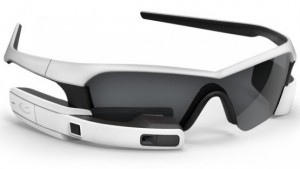 The Recon Jet is for cyclists, designed to track various fitness and riding data that can be used to improve your times. It’s powered by a 1GHz dual-core ARM Cortex-A9 processor, which is quite the setup for a pair of augmented reality glasses. The Recon Jet also features HD video recording, in addition to sensors like a gyroscope, accelerometer, magnetometer, altimeter, thermometer and GPS receiver.
The Recon Jet is for cyclists, designed to track various fitness and riding data that can be used to improve your times. It’s powered by a 1GHz dual-core ARM Cortex-A9 processor, which is quite the setup for a pair of augmented reality glasses. The Recon Jet also features HD video recording, in addition to sensors like a gyroscope, accelerometer, magnetometer, altimeter, thermometer and GPS receiver.
Unfortunately, these glasses don’t offer prescription support which means you’d still need to wear contact lenses – if you wear them. It does include a removable battery which means you can just swap it out when the included one dies, which is always a plus.
The Recon Jet will set you back $700.
LaForge Optical Icis
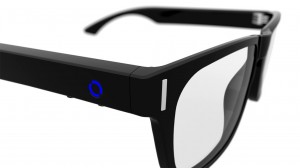 If you’re looking for something a little more budget-friendly and maybe a little less full-featured, the LaForge Optical Icis may be right up your alley. It doesn’t exactly project a full display in front of your vision, instead relegating to minimal icons, notifications, alerts and menus. These are all displayed on the sides of the glasses, almost close to your peripherals.
If you’re looking for something a little more budget-friendly and maybe a little less full-featured, the LaForge Optical Icis may be right up your alley. It doesn’t exactly project a full display in front of your vision, instead relegating to minimal icons, notifications, alerts and menus. These are all displayed on the sides of the glasses, almost close to your peripherals.
They can be charged through NFC, and offer a full six hours of battery life before they’ll die on you. Hopefully, that’s plenty time to record and capture everything you want to with the 5MP camera and HD video recorder.
There are two variants of the Optical Icis available, one for $399 which is the standard model and another for $549 which is the bold model. The difference is models is the actual design of the frame.
Meta Pro
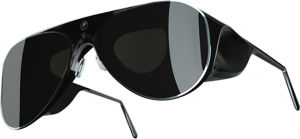 If you’re looking for something a little more stylish, then you should probably go with the Meta Pro. The ingenious minds behind the device claim that it delivers a screen area 15 times the size of what Google Glass does. That’s because it projects 3D content across a 40-degree field of view. For those of you not too tech savvy, that’s a pretty wide space so it’s generally unheard of.
If you’re looking for something a little more stylish, then you should probably go with the Meta Pro. The ingenious minds behind the device claim that it delivers a screen area 15 times the size of what Google Glass does. That’s because it projects 3D content across a 40-degree field of view. For those of you not too tech savvy, that’s a pretty wide space so it’s generally unheard of.
The Meta Pro uses dual 820p ZEISS displays, in combination with 3D surround sound to offer a truly entertaining experience while you’ve got them on. It’s powered by an Intel Core i5 portable computer, with a 128GB SSD that sits conveniently in your pocket.
Of course, all that power and pizzazz means you’ll pay a much higher price for it, at $3,650 for a single pair.
Smartglasses That Aren’t Available Yet
Epson Moverio BT-200
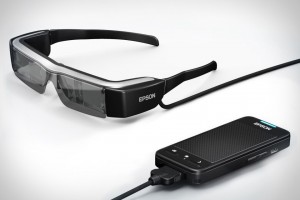 The Epson Moverio BT-200 smartglasses are more in line with Google Glass, as they are a pair of augmented reality glasses for consumer use. They actually look quite a bit like modern 3D glasses, you know the kind you’d use with your 3D home television?
The Epson Moverio BT-200 smartglasses are more in line with Google Glass, as they are a pair of augmented reality glasses for consumer use. They actually look quite a bit like modern 3D glasses, you know the kind you’d use with your 3D home television?
The most interesting feature is that they can be outfitted with prescription lenses, which means even people without 20/20 vision could still take full advantage of them. The display resides right on the outside of the lenses, and projects in front of the user’s vision similar to Google Glass.
The Moverio BT-200 comes with a control unit that includes a touch control pad, integrated motion sensors, a microSD card slot for additional content and data storage, and Wi-Fi/Bluetooth wireless connectivity. The whole system is powered by Android 4.0.
What kinds of things can you do with it? We don’t actually know the full list of features, but we’d imagine the Moverio BT-200 will do a lot of the same things as Google Glass. That means it can record HD video and capture images, offer real-world feedback, and run third-party and native apps.
The Moverio BT-200 isn’t quite available to the public yet. Epson is selling a $700 developer’s edition, which is meant for development use. That is, they want third-party developers to create unique apps for the platform before launch. They’re also probably using feedback as sort of a Beta or soak test.
We’ll have more for you on the Moverio BT-200 as soon as its available.
Jins Meme
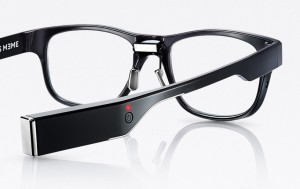 The Jins Meme glasses were recently demoed at CES 2015 in Vegas. Don’t expect these babies to project an HD quality display in front of your eyes, however. Instead, the Jins Meme is more of a fitness and health tracker akin to Jawbone, Fitbit and similar devices.
The Jins Meme glasses were recently demoed at CES 2015 in Vegas. Don’t expect these babies to project an HD quality display in front of your eyes, however. Instead, the Jins Meme is more of a fitness and health tracker akin to Jawbone, Fitbit and similar devices.
Thanks to integrated bio-sensing technology they can monitor changes in eye and body movements, to offer safety, health and fitness alerts. For instance, if you’re driving and you’re about to doze off the glasses can detect this and will do what they can to keep you awake.
This is all done with EOG electrodes that have been embedded into the headpiece frames and nose pads. The sensors can detect blinks, eye movements, and much more. There’s also an accelerometer, and gyroscope to track more severe movements. The latter of which can even be used to help improve posture while walking or sitting.
ODG R-6S Smart Glasses
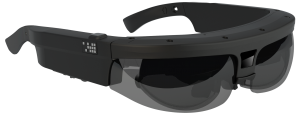 The ODG R-6S Smart Glasses are running Android and they’re packed to the brim with tracking tech. They’re actually meant for government and enterprise use, however.
The ODG R-6S Smart Glasses are running Android and they’re packed to the brim with tracking tech. They’re actually meant for government and enterprise use, however.
The content is displayed on 3D stereoscopic screen, and is output right alongside HD audio and video. The headset is powered by a Qualcomm Snapdragon processor, which is a hell of a lot of power for something like this. Of course, that power is going to cost a hefty price as the starting price is around $5,000 for one of these bad boys.
All that aside, the company is planning to launch a consumer based version – possibly with less hardware packed inside – that should cost around $1,000. Neither the enterprise model nor the consumer model are available currently. They should launch sometime in late 2015, if they’re even available this year.
Sony SmartEyeGlass
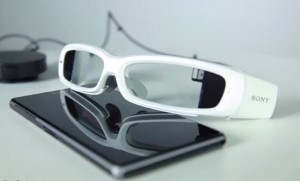 Sony’s answer to the augmented reality craze is a device with “Glass” in the name, which makes a lot of sense when you think about it. The Sony SmartEyeGlass is set to launch sometime around March, 2015.
Sony’s answer to the augmented reality craze is a device with “Glass” in the name, which makes a lot of sense when you think about it. The Sony SmartEyeGlass is set to launch sometime around March, 2015.
Sony already launched the software development tools in September 2014, which allows developers to create and release apps for the platform. Their hope is that by the time the SmartEyeGlass launches, they will have plenty of native apps on offer for users, which should sweeten the deal.
As for the hardware, it includes a gyroscope, accelerometer, ambient light sensor and – just as you’d expect – a built in camera. The biggest difference between the SmartEyeGlass and its competitors is that it includes a monochrome screen. In case you’re not familiar, monochrome screens display everything with white, amber or green pixels.
As always, we’ll offer more information about the Sony SmartEyeGlass as soon as its available.
Microsoft HoloLens
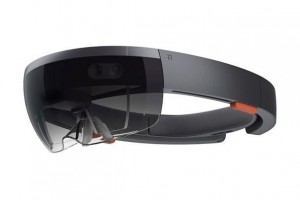 You might recognize Microsoft’s HoloLens thanks to the many mockups that should users playing a real-world 3D Minecraft in their home. That’s because the company aims to merge platforms like the Oculus Rift and Google Glass to create a unique device, which they claim is the “future of computing.” It’s certainly promising, especially when you take a look at the Windows OS mockups that see users controlling their computer with gestures.
You might recognize Microsoft’s HoloLens thanks to the many mockups that should users playing a real-world 3D Minecraft in their home. That’s because the company aims to merge platforms like the Oculus Rift and Google Glass to create a unique device, which they claim is the “future of computing.” It’s certainly promising, especially when you take a look at the Windows OS mockups that see users controlling their computer with gestures.
The HoloLens works as a sort of companion computer, with its own integrated CPU and GPU – and we’d imagine RAM. It can connect with other Windows computers and possibly other Microsoft devices, such as the Xbox One. Then, the content is displayed as a “hologram” in the real world.
We’d imagine it’s going to be useful for a whole slew of applications from gaming, to productivity and even creative endeavors.
